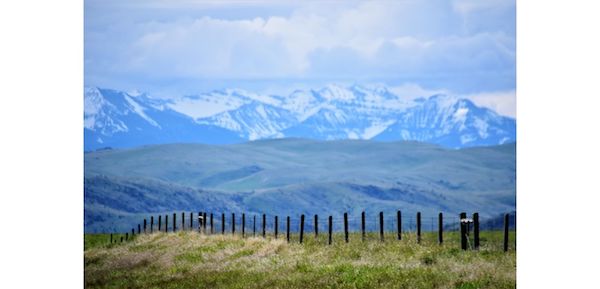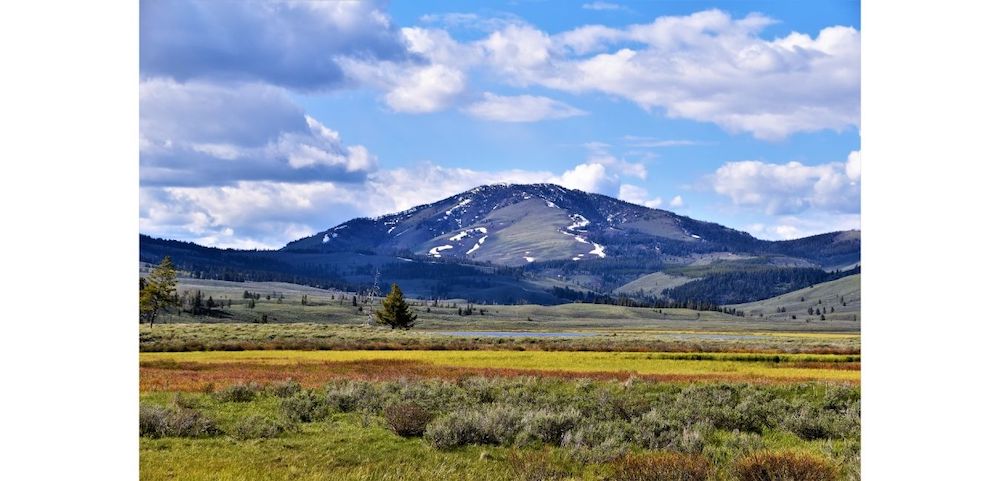This time of year serves an annual reminder of the importance of a clean and healthful environment. As Montana is ravaged in forest fires yet again, and in the midst of a bad drought, it hopefully inspires us Montanans to band together and demand that we preserve Montana for future generations. Indeed, what is Montana if not for out beautiful Mountains, rivers, valleys, and big sky. If we lose our beautiful natural features, we risk losing what sets Montana apart from the other states.
The most pressing concerns in Montana seem to be revolving around heat, lack of water, and drought, all of which are related. We hope this year is an anomaly, and perhaps it is to some degree, but it seems like water is just becoming more of an issue each year. In addition to water issues, Montana has dealt with a host of historical environmental issues typically involving mines. Take for example the massive environmental concerns stemming from the Butte and Anaconda mines, or the issues with asbestos stemming from the vermiculite mines near Libby, Montana. Montana is all too familiar with environmental issues.
But where does the Law come in? In Montana we are very fortunate that our Constitution actually guarantees the right to a clean and healthful environment. The Montana Constitution, Art. II, Sect. 3 states:
Section 3. Inalienable rights. All persons are born free and have certain inalienable rights. They include the right to a clean and healthful environment and the rights of pursuing life’s basic necessities, enjoying and defending their lives and liberties, acquiring, possessing and protecting property, and seeking their safety, health and happiness in all lawful ways. In enjoying these rights, all persons recognize corresponding responsibilities.
Moreover, in MEIC v. Montana DEQ, 1999 MT 248, the Court confirmed that Montana’s guarantee of a right to a clean and healthful environment is a fundamental right. The MEIC case involved a mining company that sought to build a massive open-pit gold mine in the upper reaches of the Blackfoot River. The Blackfoot River of course ultimately runs into the Clark Fork, which goes on to flow into the Columbia River system. The proposed mine involved discharging water into the Blackfoot system that contained Arsenic, a carcinogen.

The MEIC decision contains a thorough and in depth review of the 1972 Constitutional Convention, where the Framers memorialized the right to a clean and healthful environment. The Framers were adamant about writing Art. II, Sect. 3 as airtight as possible, to preserve Montana’s beauty knowing that there would be enormous pressure to degrade our natural resources in coming generations. As one Framer put it:
The majority felt this would permit degradation of the present Montana environment to a level as defined in Illinois, which may be clear and healthful. And our intention was to permit no degradation from the present environment and affirmatively require enhancement of what we have now.
Writing for the Court, Justice Trieweiler went on to conclude:
We conclude, based on the eloquent record of the Montana Constitutional Convention that to give effect to the rights guaranteed by Article II, Section 3 and Article IX, Section 1 of the Montana Constitution they must be read together and consideration given to all of the provisions of Article IX, Section 1 as well as the preamble to the Montana Constitution. In doing so, we conclude that the delegates intention was to provide language and protections which are both anticipatory and preventative.
The delegates did not intend to merely prohibit that degree of environmental degradation which can be conclusively linked to ill health or physical endangerment. Our Constitution does not require that dead fish float on the surface of our state’s rivers and streams before before its farsighted environmental protections can be invoked. The delegates repeatedly emphasized that the rights provided for in subparagraph (1) of Article IX, Section 1 was linked to the legislature’s obligation in subparagraph (3) to provide adequate remedies for degradation of the environmental life support system and to prevent unreasonable degradation of natural resources.

In the MEIC case, the Court invoked Montana’s right to a clean and healthful environment to shut down the proposed mine, and proactively shut down the release of arsenic into the Blackfoot River and downstream communities.
Other Cases Involving the Right to a Clean and Healthful Environment
The MEIC case set the precedent for using the Constitutional Right to a clean environment to proactively avoid environmental degradation. After MEIC, there have been a number of important cases. Here are some other Montana cases have invoked the right to a clean and healthful environment:
Clark Fork Coalition v. Montana DNRC – Clean and Healthful Environment
The Clark Fork Coalition v. Montana DNRC, 2021 MT 44, case involved yet another mine, this time a silver and copper mine in the Kaniksu National Forest of Northwest Montana. At issue in the case was water usage and possible depletion of water for nearby streams. DNRC approved the proposed water usage and the Clark Fork Coalition contested whether the approval was appropriate.
In Clark Fork Coalition, the Petitioners argued that the Montana Water Quality Act (MWQA) procedures violated Art. II, Sec. 3’s fundamental right to a clean and healthful environment. Petitioner’s argued that the MWQA, et. al., deprived, “them of an adequate remedy to protect affected area surface waters from degradation by advance review of the proposed Phase 2 groundwater use for compliance with applicable MWQA nondegradation standards.” In simple terms, Petitioners argued that the procedures in place would not stop a problem before it occurred, and therefore violated Art. II, Sec. 3.
The Court concluded that the MWQA procedures at issue did not violate Art. II, Sec. 3, because there were sufficient other procedures to prevent degradation. The Court referenced a number of other protections found in the MWQA, MEPA, and MMRA that sufficiently protected the environment from degradation.
Sunburst v. Texaco, Clean and Healthful Environment for Private Action
In Sunburst v. Texaco, 2007 MT 183, the Montana Supreme Court was potentially faced with the issue of whether Art. II, Sec. 3 could be used to bring a Constitutional tort. In Sunburst, the Sunburst school district and a number of surrounding property owners sued Texaco for property damage where benzene had leaked from a Texaco refinery onto their respective lands, causing damage.

The Sunburst plaintiffs alleged a Constitutional tort, among other theories. At trial, the judge allowed the Constitutional tort theory to go forward, as well as nuisance, constructive fraud, wrongful occupation of property, and other claims. The jury awarded over $40 million in damages, under the various theories. Importantly, the Court allowed “restoration damages,” which allows Montana’s landowners to recover a reasonable amount of money to restore damaged property. As opposed to being limited to diminution of value, which fails to account for full damages to a ruined property.
The Supreme Court punted on the Constitutional theory, reasoning that Constitutional torts can only be brought when there isn’t a common law or statutory remedy available. In Sunburst, the verdict could stand under the other common law theories, and the Court therefore said the Constitutional tort was unneccesary. The Court wrote that Sunburst, “has not demonstrated that the common law restoration damages would not address adequately any potential damages caused by Texaco’s contamination.” In essence, the Court reasoned that there was no need to establish a Constitutional Tort because the Sunburst plaintiffs were able to have the same remedy, and secure the same amount of damages, under traditional remedies.
The Sunburst case was expanded inLampi v. Speed, 2011 MT 231 to allow a landowner to recover restoration damages from a neighbor that negligently started a fire, burning his property.
Park City v. Montana DEQ – Clean and Healthful Environment
In Park City v. Montana DEQ, 2020 MT 303, at issue was a proposed exploration by a mining company near Emigrant, Montana, in Paradise Valley. The case focused on increased traffic and road use affecting the wildlife, as well as possible water discharge that could contain acidic materials and/or heavy metals. The Court considered a provision of the Montana Environmental Protection Act (MEPA) and whether it provided “adequate remedies” to avoid environmental degradation.
The Court invoked Art. II, Sec. 3 right to a clean and healthful environment and wrote, “Montana’s right to a clean and healthful environment is complemented by an affirmative duty upon their government to take active steps to realize this right.” The Court declared a portion of the MEPA an unconstitutional violation of the right to a clean and healthful environment as it failed to afford the people of Montana the requisite proactive remedy to avoid environmental degradation.
Conclusion
Montana’s unique and special guarantee of a right to a clean and healthful environment is a powerful legal tool used that can be used: 1) proactively prevent environmental degradation; 2) potentially used as a basis for a Constitutional Tort, if necessary.
We are lucky to have the special protections of Art. II, Sec. 3. Montana is unique only because of our beautiful landscapes, mountains, rivers, and lakes. If Montana loses those features, it risks losing its identity and becoming just another state. There will always remain disputes as to what the best way is to preserve Montana — for example, there are reasonable arguments to be made on both sides of the logging debate. Some logging is perhaps good, too much is bad. Regardless, know that Montana has the legal tools available to take a stand against unreasonable environmental impacts.
Contact us if you have any questions or would like to discuss a situation involving Montana’s beautiful environment.

